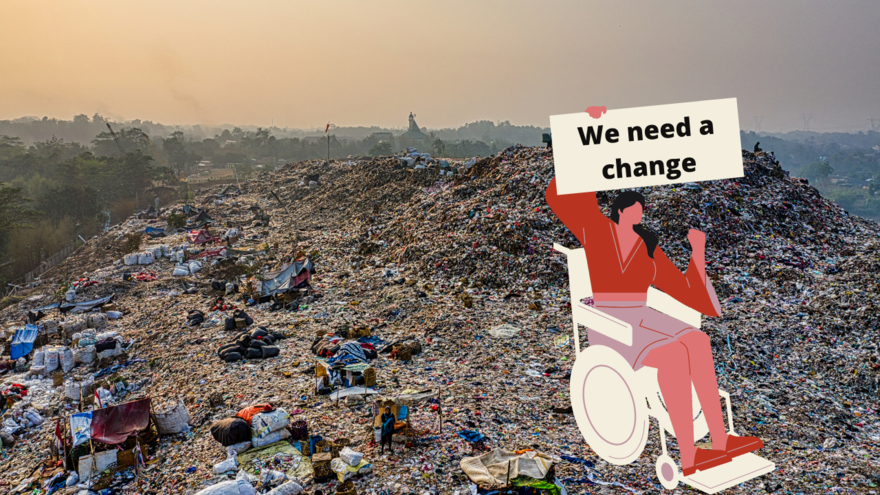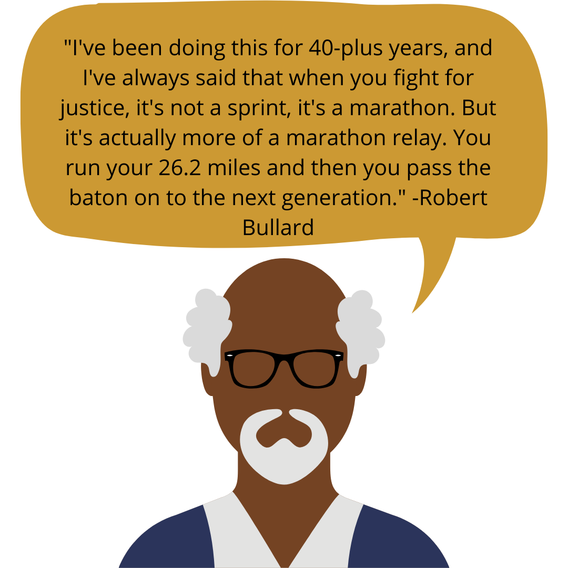
Everyone deserves to have a clean, healthy, and green environment.
In order to live in a sustainable world, we must first fight to secure justice for all people. The Environmental Justice Movement encourages “environmental, economic and social justice” and confronts environmental racism.
“Environmental racism” was first coined by Benjamin Chavis, a civil rights leader, in 1982. The term describes a systemic racism structure that harms communities of color who are forced to live near hazardous areas like landfills and mines, and as an effect disproportionately suffer from related health issues. Chavis separated environmental racism into five groups: “racial discrimination in defining environmental policies, discriminatory enforcement of regulations and laws, deliberate targeting of minority communities as hazardous waste dumping sites, official sanctioning of dangerous pollutants in minority communities, and the exclusion of people of color from environmental leadership positions."
One of the most notable cases of environmental injustice in the United States is the Flint Water Crisis. Additionally, one of the groups most commonly harmed from environmental racism is Native Americans. In 2002, a commission for racial justice discovered that nearly half of all Native Americans “live in communities with uncontrolled hazardous waste sites."
Robert Bullard is regarded by many as the “father of environmental justice." In 1978 as a sociologist, Bullard helped collect case information for the discrimination lawsuit Linda McKeever Bullard, his wife, filed against a company that was putting a landfill in a Black neighborhood in Texas. Bullard and his students discovered “five out of five landfills in Houston were located in black neighborhoods, and six out of eight incinerators were in black neighborhoods.” Over 80% of solidified trash ended up in Black communities in Houston over a 48-year span. Meanwhile, Black people made up only a quarter of the population in Houston. The disproportionate environmental effects on Black communities spurred Bullard’s passion for environmental justice, especially when the judge ruled in favor of the landfill company. Bullard states that the Environmental Justice Movement “advocates for healthy, sustainable, livable communities that ensure tax dollars are spent on those in need rather than where the power lies.”
The Environmental Justice movement was propelled with the Delegates to the First National People of Color Environmental Leadership Summit in 1991. The summit created seventeen Environmental Justice principles to secure safe environments and communities for all. These principles include affirming the “fundamental right to political, economic, cultural and environmental self-determination of all peoples” and continue to define the expanding movement.

Environmental racism affects communities around the world and has been reinforced with the novel Coronavirus. Today, research data has found that Black Americans are being killed from COVID-19 at “twice the rate of their white counterparts in large part because of environmental issues like pollution-caused asthma and heart disease."
It can be easy to get discouraged about the harsh reality of Environmental Justice. As you read this, individuals and communities continue to be harmed from the actions of our society. However, the movement is only growing in support and momentum and groups of people have been making positive impacts for decades.
RAVEN (Respecting Aboriginal Values and Environmental Needs, is a registered non-profit that protects indigenous land and communities by raising legal funds. They recently succeeded in helping the Tsilhqot’in First Nations protect their sacred land from the Taseko Mines Ltd. company’s attempts to open a gold-copper mine there. The NAACP also fights for climate justice and was instrumental in raising awareness of the Flint Water Crisis. Their efforts continue to give a platform to disenfranchised voices and provide justice to BIPOC communities. Close to home, the Land Stewardship Project in Minnesota works to promote sustainable agriculture and environmental justice for healthier, safer, and more racially-just communities across the state.
Duluth is well-known for its hiking trails, parks, and access to Lake Superior. Our proximity to nature, however, does not mean that we are exempt from environmental justice issues. Our parks and trails are meant for everyone, yet the overwhelming majority of users are white. Additionally, major health divides separate East and West Duluth. It’s important that we recognize where our city needs to improve so that all feel supported by our social systems.
To join the movement, use your voice by having conversations with your friends, family and classmates about environmental racism. Speak up to hold corporations and your local, state and federal governments accountable for their actions. Democracy works best when we all get involved, so vote for representatives who are dedicated to fighting for issues that matter to you. Everyone deserves to have access to a clean, healthy, and green environment. We must all fight until we all do.